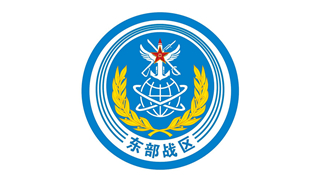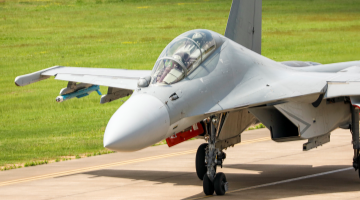By Guo Xiaobing
郭晓兵
Some American media recently reported that Asia has come to a period of massive arms race that’s never seen before, which is at risk of getting out of control as the region is splitting into two major blocs – the US-Japan-ROK bloc and the China-Russia-DPRK bloc. Well, it was half right on the issue of bloc formation and aggravated confrontation in Asia – that the US is indeed up to something big.
有美国媒体日前刊文称亚洲已进入前所未见的大规模军备竞赛,还说亚洲正因此分裂为美日韩和中俄朝两大阵营,军备竞赛面临失控风险。在亚洲鼓噪阵营化和加剧对抗的问题上,这篇文章说对一半,美方确实试图“下盘大棋”。
For starters, the US is trying to revamp the hub-and-spoke alliance system in the Asia Pacific into a networked architecture with the aim of creating a mini version of NATO in the region. The US-Japan-ROK alliance is just one of the many micro multilateral systems it is operating. The Nuclear Posture Review issued by Washington last year suggested forming the trilateral (US, Japan, ROK) or quadrilateral (plus Australia) extended deterrence consultation mechanism and establishing multilateral nuclear protection in the Asia Pacific following the NATO pattern. Taking this opportunity, Japan has overhauled its defense policy and planned to significantly increase the military budget and develop missiles and other non-nuclear strategic aggressive capabilities, aiming to substantially break away from the exclusively defense-oriented strategy. However, hindered by the historical conflicts and divergence of interests between Japan and the ROK, the trilateral mechanism isn’t likely to function as the new US-led pillar of Asian Pacific security architecture just yet.
一方面,美国着力把亚太地区的轴辏式 同盟体系改造为网络式同盟体系,试图打造亚太小北约。美日韩是华盛顿着力经营的小多边体系之一。美去年出台的《核态势评估报告》提出要构建美日韩三边或美日韩澳四边延伸威慑磋商机制,在亚太仿照北约编织多边核保护伞。日本则借机大幅调整防务政策,准备大幅增加军费并发展导弹等非核战略进攻力量,寻求实质性地突破“专守防卫”原则。但受制于日韩历史矛盾与利益分歧,美日韩三边机制尚难成为美主导的亚太安全机制新支柱。
It’s the other two mechanisms that the US has pinned its hopes on. One is the Quadrilateral Security Dialogue (Quad) that geographically surrounds East Asia. The other is the AUKUS, whereby the three Anglo-Saxon countries are more daring to try the “red line” by sharing and collaborating in sophisticated military technologies, as Washington and London plan to help Canberra build nuclear submarines while intensifying cooperation in such areas as hypersonic weapons, electronic warfare, cyberspace, AI, and quantum technology. Moreover, America’s National Defense Authorization Act for the Fiscal Year of 2023 granted a US$10 billion military aid for Taiwan island and vowed to build a regional response depot there, showing an undisguised intention to continue curbing China with Taiwan within the Asian Pacific security system.
真正被美寄予厚望的恐怕是另外两个机制,一是地理上环绕东亚大陆的美日印澳“四边安全对话”机制,二是美英澳三边安全合作机制(AUKUS),同属盎格鲁撒克逊一系的三国在军事高科技分享与合作上更敢蹭“红线”,美英计划帮助澳大利亚建造核潜艇并加强在高超音速武器攻防、电子战、网络空间、人工智能、量子技术等领域合作。另外,美国《2023国防授权法案》授权向台提供100亿美元军援,并在台建设“区域应变军备库”,在亚太安全体系内继续“以台制华”意图明显。
At the same time, Washington is working hard to expand NATO to the Asia Pacific by doing two things. One, it brought its Asian Pacific allies into NATO’s coordination mechanism. Last year, NATO invited Japan, ROK, Australia and New Zealand to participate in the Madrid Summit to discuss the so-called Europe-Asian coordination. Two, it convinced NATO’s European members, such as Britain, France and Germany, to dispatch troops to the Asia Pacific, where its members may become more active if NATO feels less pressure from the Ukraine crisis in the future.
与此同时,美国还着力推进北约亚太化。这表现在两方面。一是把美国的亚太盟友拉进北约协调机制。去年,北约邀请日韩澳新参加马德里峰会,共商所谓欧亚协同。二是把英法德等北约欧洲成员国的军力派到亚太来。如果日后北约在乌克兰危机中承受的压力减小,北约成员国在亚太地区可能会更活跃。
The latest issue of American magazine Foreign Affairs published an article titled “The Roots of Washington’s Addiction to Military Force”, which pointed out that after the Cold War and especially following the 9/11 attacks, America’s adversaries are provoking it less frequently, and yet Washington is intervening with armed forces more than ever, so much so that more than half of the world’s population now views it as a threat. One of the reasons why the US is so bellicose is its tremendous military superiority over other countries. Will it be able to control the impulse to resort to force if such superiority had been bolstered by a more powerful alliance system in the Asia Pacific? If not, will the region, like the Middle East and East Europe in the past, fall from a locomotive of world economic development to pandemonium burning in the flames of war?
最新一期美国《外交》杂志有篇文章,题目就是《华盛顿对军事力量上瘾的根源》,指出冷战之后尤其是“9•11”事件以来,美国的所谓对手并没频繁挑衅它,但美国在使用武力方面却空前任性,以至于全世界超过一半的人将美国视为威胁。美国如此黩武的原因之一就是与其他国家相比,它拥有巨大军事优势。如果美国在亚太地区有了更加强大的同盟体系加持,它还能够克制动武的冲动吗?亚太地区会不会因此重蹈大中东和东欧的覆辙,从世界经济发展的火车头沦为战火纷飞的修罗场呢?
Even American scholars are worried that the US may not be able to contain itself. All countries, including China, that uphold and pursue peaceful development will play their due part and remind the US that Asia Pacific is no place for it to run amuck. Meanwhile, the US must do some serious self-reflection and ask itself why it failed to form the so-called “Southeast Asian Treaty Organization” against China, and why it couldn’t win the Korean War or the Vietnam War. More importantly, it should get its head around the idea that sovereign equality and mutual respect must also be upheld in preventing a crisis or conflict.
就连美国学者都担心美国不能自我克制。包括中国在内爱好并聚焦和平发展的国家都会尽好自己职责,提醒美国亚太不是一个肆意妄为的地方。当然美国也亟须自我反思,历史上针对中国搞东南亚条约组织为什么搞不成?朝鲜战争、越南战争为什么打不赢?防范危机和冲突是不是起码要做到主权平等和相互尊重?
(The author is the director of the Center for Arms Control Studies, China Institutes of Contemporary International Relations)作者是中国现代国际关系研究院军控研究中心主任
Editor's note: Originally published on huanqiu.com, this article is translated from Chinese into English and edited by the China Military Online. The information and opinions in this article do not necessarily reflect the views of eng.chinamil.com.cn.









